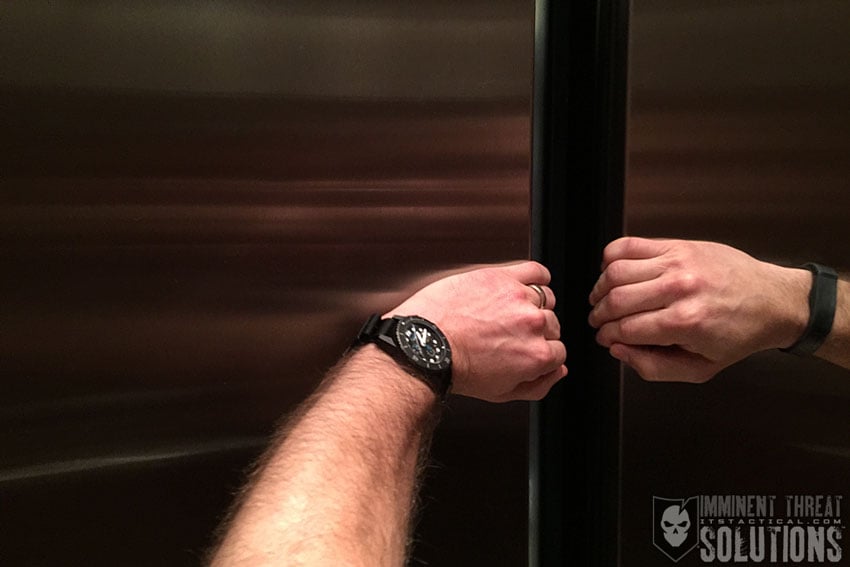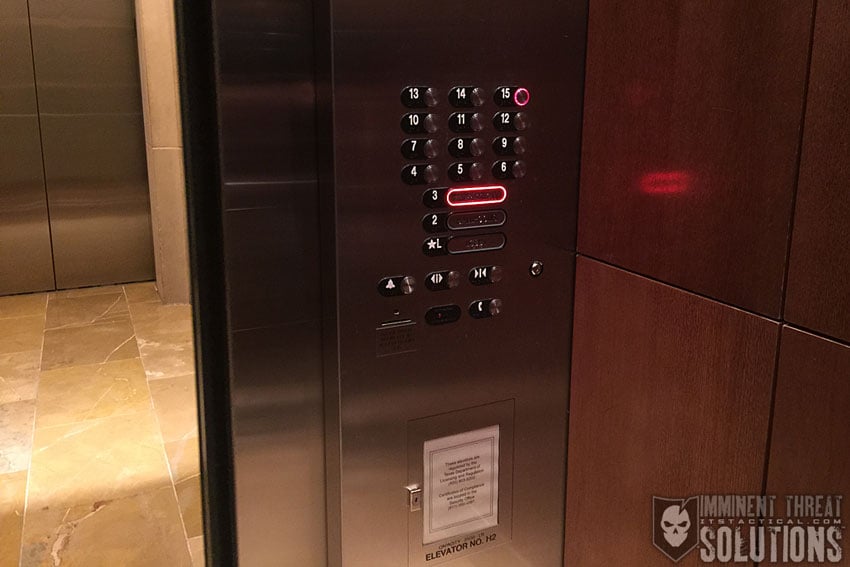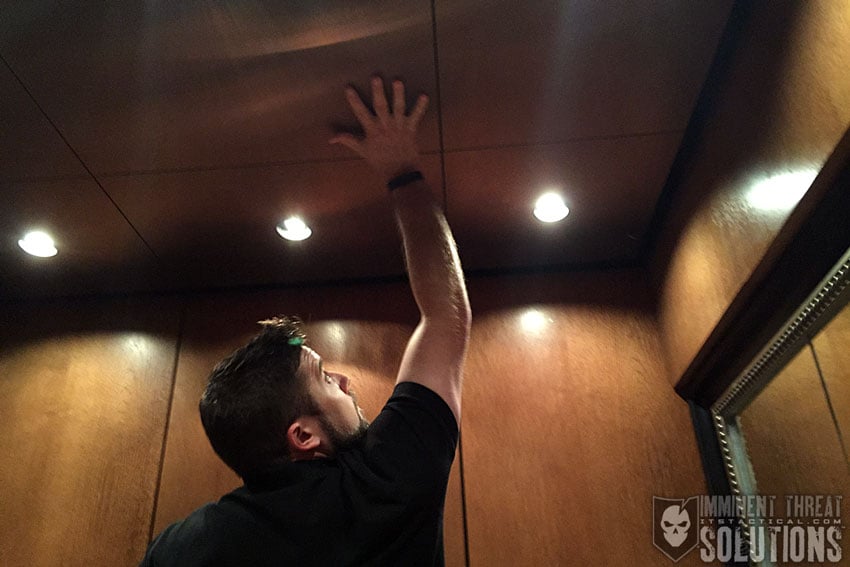Elevator Action: How to Escape Being Trapped in an Elevator
Elevator Action: How to Escape Being Trapped in an Elevator

How many of you remember the old Nintendo game Elevator Action? In the game you play a spy, bounding to and from elevators to reach the bottom floor of a building. As you descend, you’re dodging bullets and taking out bad guys along the way to your escape in a super fast 8-bit sports car. That’s how your normal workday commute goes anyway, right?
While you might not be dodging bullets, I’m sure you’ve always wondered about what you’d do if you found yourself in a stuck elevator. Would you reenact Die Hard and climb out the top hatch and scale the cables? Probably not, considering those emergency hatches are typically locked from the outside.
I’ll get into the details of what you should do if you find yourself trapped in an elevator, but this article might also serve as a reminder to always take the stairs. Not just for the reason that electronics will inevitably fail at the least convenient times, but also due to the implication that you’re predictable in an elevator.

As my friend Uri from the Red Teams Blog says, “never take the elevator.” Uri’s not a particularly paranoid person, but he always has a way of looking at things from a situational awareness aspect and is an advocate of never putting yourself in a position that can be compromised. He mentions that you can easily be tracked in an elevator, as you’re basically trapped in a box that always drops you onto a semi-fixed location that’s easy to monitor and observe. Worse, a trap can easily be set on any of the stops an elevator makes. Taking the stairs can help you familiarize yourself with exits and work on your escape plan. You do always have an escape plan, right?
Let’s get back to what to do in an emergency if you should ever find yourself trapped in an elevator, because you’re bound to ride another one, even after reading this article.
Get Control

Let’s first talk about your options inside the cab of an elevator. OSHA (Occupational Safety & Health Administration) requires that all elevators are thoroughly inspected every year and that additional monthly inspections for satisfactory operation are also conducted. Records of the annual inspections are also to be posted within the vicinity of the elevator, along with the elevator’s maximum load limits. Load limits are to be posted in a conspicuous location both inside and outside of the elevator.
I mention these details so that you’ll know what kind of regulations cover elevators on a federal level and know what to look for when it comes to load limits, etc. Checking your state regulations can be helpful too, if you want to wade through the elevator code. It’s also common to see the wording in the photo below, that mentions compliance certificates (inspections) being on file somewhere other than the elevator itself.

Depending on the building you find yourself inside of and the type of elevator, most have a common car operating panel in which to make your desired floor stop selection from. In addition to the array of floor buttons, you’ll also find an alarm bell button and either a dedicated phone to call for help, or a help button.
The alarm bell is there to sound an audible alarm in case of an emergency to summon help. This beats tapping out morse code on the elevator door, but the alarm might not be heard if you’re away from a floor where someone can hear it. The help button should establish a two-way communication with someone that can also dispatch assistance for you if you’re trapped with no way out.

Most elevators also have a top-opening emergency exit, but from what I’ve been able to find out in talking with elevator repair companies and a friend that’s a local downtown firefighter, they’re locked from the outside by law. It’s not necessarily for you to access during a self-rescue attempt, but more for emergency responders to use to rescue you.
Preventative Measures
There’s a few things to mention before you might even get on an elevator, that can help prevent you from finding yourself in a scenario that requires rescuing.
- What’s the condition of the elevator? Does it look dilapidated or like it’s having issues? Maybe you’d be best taking the stairs to begin with.
- Observe the load limits of the elevator and judge whether you stepping onto the elevator is the best decision, based on the number of people already on it.
- Keep your cell phone charged in case it’s needed for emergency communication.
- Consider carrying a flashlight if it’s not already part of your EDC (every day carry.)
- This may sound like a no-brainer, but I’ll say it anyway. If there’s a fire, take the stairs, don’t even think about evacuating a burning building in an elevator.

Emergency Procedures
So what should you do if your elevator gets stuck and you feel you need to utilize the emergency options, like the help button and alarm bell?
- Remain Calm, it can have a positive effect on those around you who may not be.
- If the power is out, use a flashlight or the light from your cell phone to find and press the door open button or another floor selection.
- If the door open button doesn’t help, activate the help button on the elevator control panel.
- Make note of the time that the elevator stopped working and how many people are inside with you. Report this information during your call.
- If the help button isn’t functioning, try using your cell phone to call 911. Most elevators are faraday cages and reception might not be possible.
- If you still can’t get through to anyone, use the alarm bell to try and summon assistance.
- Banging on the door or yelling could work as well, but don’t over exert yourself if there’s no response after awhile.
- Patience and time might be your only recourse while waiting for emergency responders. Did you bring snacks?
- If all else fails and it’s a life or death emergency, you can make the decision on whether it’s worth trying to pry the door open to see if you can climb out through the door on the floor above or below you. I’d highly advise against this option, as the elevator could spring to life and you could potentially be crushed. Your situation will of course dictate your risk level, but there’s no need to jump to this option too soon, or to even hastily set up a pee corner (see below.)
As mentioned previously, the emergency exit hatch at the top of the elevator is more than likely locked from the outside, as required by law. You may not even be able to reach this unless there’s another person in the elevator to help you, or a railing to stand on.

I’ll reiterate that patience is key in a situation like this. The concept of keeping calm existed long before the British propaganda posters of WWII and is still a solid model to follow in many emergency situations.
Simply taking the time to assess your environment and determine the best course of action can work wonders, both inside an elevator and out.
What are your tips for handling an elevator emergency?











Discussion